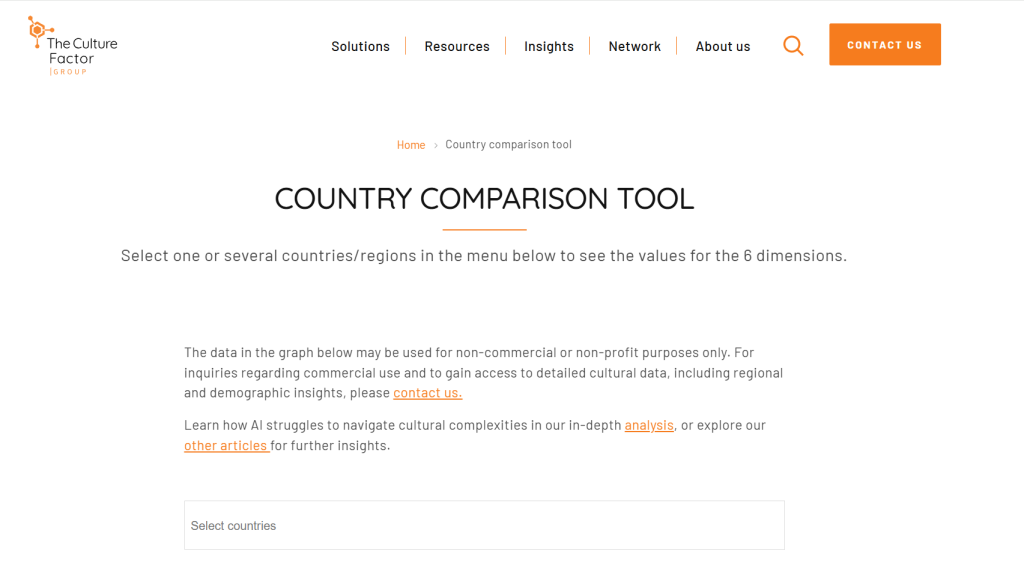1. Examine Hofstede’s Dimensions of Culture in Workplace Settings
Have you ever wondered why your straightforward email caused confusion with international colleagues or why a seemingly harmless comment was received awkwardly? Cultural differences in communication styles and expectations often cause these unintended hiccups. But don’t panic! Understanding cultural frameworks can quickly turn confusion into clarity.
Geert Hofstede’s dimensions of culture offer one of the most useful tools for navigating cross-cultural communication effectively. Let’s dive into this straightforward guide on applying Hofstede’s dimensions to enhance your workplace communication across cultures.
Why Hofstede’s Dimensions Matter in Communication
Mastering these dimensions helps you:
- Understand different cultural communication preferences.
- Improve cross-cultural collaboration and trust.
- Avoid unintended offenses or confusion.
- Foster inclusivity and respect within diverse teams.
Dimension 1: Power Distance (Respect for Authority)
What it is:
Power Distance measures the degree to which people accept hierarchical authority without questioning it.
High Power Distance cultures (e.g., China, Mexico):
- Strong respect for hierarchy and authority.
- Less direct communication upward; formality is expected.
Low Power Distance cultures (e.g., USA, Sweden):
- Prefer flat hierarchies and direct communication.
- Comfortable openly challenging ideas from authority.
Real-world example:
In high Power Distance cultures, address leaders formally and avoid openly challenging their ideas in group meetings. In low Power Distance cultures, openly sharing and debating ideas—even with managers—is generally welcome.

Dimension 2: Individualism vs. Collectivism (Group or Self-Focused)
What it is:
Individualism emphasizes personal goals and independence, while Collectivism prioritizes group harmony and relationships.
Individualistic cultures (e.g., USA, Australia):
- Communication emphasizes individual achievements and directness.
- Task-oriented, clear, and straightforward language.
Collectivist cultures (e.g., Japan, India):
- Communication is relationship-focused, emphasizing group cohesion.
- Indirect, polite, and diplomatic language is preferred.
Real-world example:
With collectivist colleagues, show sensitivity by gently framing criticism or feedback. In individualistic teams, direct feedback is typically valued and encouraged.
Dimension 3: Masculinity vs. Femininity (Competitiveness vs. Collaboration)
What it is:
Masculine cultures emphasize competition, assertiveness, and achievement; Feminine cultures value relationships, cooperation, and work-life balance.
Masculine cultures (e.g., Japan, Germany):
- Communication may be assertive, competitive, and performance-focused.
- Achievement-oriented, with clear and measurable goals.
Feminine cultures (e.g., Sweden, Norway):
- Communication emphasizes collaboration, consensus, and empathy.
- Prefer inclusive language and group decision-making.
Real-world example:
In feminine cultures, focus discussions on team consensus and collaboration. In masculine cultures, emphasize performance outcomes and competitive advantages clearly and directly.
Dimension 4: Uncertainty Avoidance (Comfort with Ambiguity)
What it is:
Uncertainty Avoidance refers to comfort with ambiguity and unknown outcomes.
High Uncertainty Avoidance cultures (e.g., France, Greece):
- Require clear instructions, rules, and structure.
- Prefer detailed, explicit communication.
Low Uncertainty Avoidance cultures (e.g., USA, Singapore):
- Comfortable with ambiguity and fewer detailed instructions.
- Flexible, adaptable, and comfortable with general guidelines.
Real-world example:
With colleagues from high Uncertainty Avoidance cultures, provide clear, detailed instructions. With low Uncertainty Avoidance teams, offer general guidance and allow for flexibility.
Dimension 5: Long-term vs. Short-term Orientation (Future vs. Immediate Results)
What it is:
Long-term cultures prioritize future rewards, persistence, and adaptability. Short-term cultures focus on immediate outcomes and quick results.
Long-term oriented cultures (e.g., China, Japan):
- Communication stresses patience, relationship-building, and long-term goals.
- Slow, careful decision-making.
Short-term oriented cultures (e.g., USA, Australia):
- Emphasize quick decisions and immediate results.
- Communication is fast, direct, and results-driven.
Real-world example:
Long-term oriented colleagues appreciate thoughtful, relationship-based discussions and patience. Short-term oriented teams value quick decisions and immediate, practical communication.
Dimension 6: Indulgence vs. Restraint (Expressing Emotions)
What it is:
Indulgent cultures openly express emotions and emphasize leisure, while restrained cultures control emotional expression and prioritize self-discipline.
Indulgent cultures (e.g., Brazil, Mexico):
- Open, expressive, enthusiastic communication.
- Social, informal interactions are welcomed.
Restrained cultures (e.g., Russia, China):
- Controlled, reserved, formal communication.
- Prefer professionalism and restraint in emotional expressions.
Real-world example:
In indulgent cultures, informal, expressive communication strengthens bonds. With restrained cultures, maintain professionalism and controlled emotional expression to build trust.
Quick Checklist: Applying Hofstede’s Dimensions to Communication
Before communicating cross-culturally, quickly confirm:
✅ Am I respecting hierarchy appropriately (Power Distance)?
✅ Is my communication individual or group-oriented (Individualism vs. Collectivism)?
✅ Am I emphasizing cooperation or competitiveness appropriately (Masculinity vs. Femininity)?
✅ Have I provided the right level of detail or structure (Uncertainty Avoidance)?
✅ Does my communication align with immediate or long-term expectations (Long-term vs. Short-term Orientation)?
✅ Am I expressing emotions appropriately (Indulgence vs. Restraint)?
Real-World Scenario: Applying Hofstede’s Dimensions in Action
Imagine leading a global project team with members from Germany, Japan, and Brazil:
- Power Distance: Respect hierarchy with Japanese colleagues; engage more openly with German and Brazilian team members.
- Individualism vs. Collectivism: Promote team harmony and group consensus to engage Japanese members; allow individual input and direct communication with German colleagues.
- Masculinity vs. Femininity: Highlight collaboration and teamwork clearly with Brazilian and Japanese members; emphasize results-driven goals with German colleagues.
- Uncertainty Avoidance: Provide detailed plans and structured timelines for German and Japanese team members; allow flexibility with Brazilian members.
- Long-term Orientation: Balance quick wins (Germany, Brazil) with long-term relationship-building (Japan).
- Indulgence vs. Restraint: Encourage enthusiasm and expressiveness in discussions with Brazilian members; maintain reserved professionalism with Japanese and German colleagues.
This careful, informed approach to cross-cultural communication enhances collaboration, trust, and overall project success.
Final Thoughts: Mastering Hofstede’s Cultural Dimensions
Understanding and applying Hofstede’s dimensions equips you with powerful insights for navigating cross-cultural communication effectively. By respecting differences in hierarchy, individual vs. group orientation, competitiveness, tolerance for uncertainty, time orientation, and emotional expression, you’ll foster trust, inclusivity, and productive collaboration across diverse teams.
Ready to continue enhancing your communication skills by clearly understanding high-context and low-context communication styles? Fantastic—let’s keep going!
